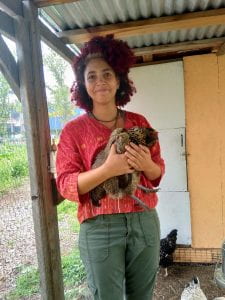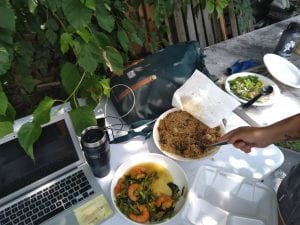This week I truly got a taste of just how widespread community gardening and urban farming is becoming in New York City, and all seemingly developing without New Yorkers even realizing! For instance, on Monday, I struck up a conversation with Jane at Kelly Street Garden (one of the volunteers and also our resident yoga instructor) about her work with Brooklyn Grange Urban Farms. She specifically works at the Long Island City site, which I was immediately excited about visiting since it wouldn’t be too far of a trip from my neighborhood in Corona, Queens. Yet, to my surprise, when I typed in the address on Google Maps, all I saw was an industrial building and a busy street. The farm that Jane was referring to wasn’t like the typical farms I had been working with all summer such as at Red Hook or New Roots. In fact, this farm was on the building’s roof! What’s more, Jane spoke about how the farm still manages to hold weekly farmer’s markets as well as yoga classes and similar community events. While I had known that rooftop gardening was popping up more frequently across the city, I had never imagined that this idea had spread from simple residential gardens to full commercial operations, where even a farmer’s market can be held!
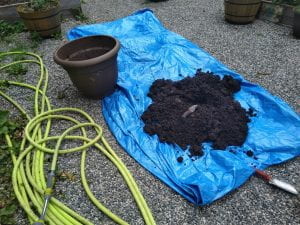
I had another similar surprise when Kendra and I met with CCE’s Urban Gardens Specialist, Kwesi Joseph, on Wednesday for a tour of Oko Farms, which I had heard was NYC’s first and only outdoor aquaponics urban farm. We met at the newly built site in Williamsburg, which was tucked away behind ongoing construction and located right on the shore of the East River. With such a unique location, I truly would never have expected to find an urban farm here, much less one with such an array of diverse operations. After introducing ourselves to Yemi, the farm director, as well as many of the other staff members and volunteers, we slowly learned that the space was not only home to Oko Farm’s aquaponics system, but provides space for a composting company, the Island Bee Project’s hives, and a small vegetable plot owned by the local developers in the area. In other words, it appears that as in true New York fashion, not only are the locations of these farms and gardens creative but the spaces themselves are maximized to include as many beneficial projects as possible!
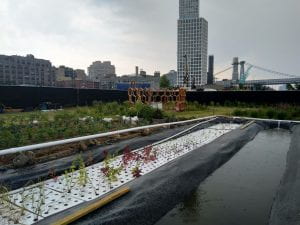
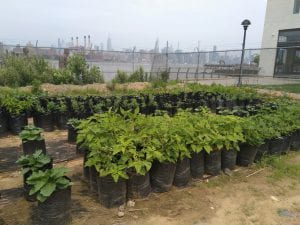
After a brief tour, we also were able to learn more about the schematics of an aquaponics system. Greg, one of the staff members at the farm, explained how all of the water in the system is a closed-loop, in which all of the water housing the fish is also eventually used in the artificial ponds where the plants grow. Because of this, though, it is especially important for adequate filtration, with careful attention placed on nutrient and oxygen levels as the water moves to different areas. Greg pointed out the large barrels beside each fish tank which serve to catch any large solids including sediment and fish waste to eventually be recycled as fertilizer. Additionally, he told us that nutrient level tests can often be performed in-house with generic aquarium equipment. However, the difficulty comes in when trying to ensure that there is sufficient dissolved oxygen in the system, as a lack of dissolved oxygen can prove both fatal to the fish as well as the plants, which can become more susceptible to algae and mold as a result. Without any reliable methods to test dissolved oxygen, there is thus a greater emphasis placed on the farm staff’s knowledge base of plant health indicators to identify any issues before they can cause greater damage to the farm. As such, even with novel innovations made in agriculture, it is still ultimately the intersection of technology with human wisdom that produces the greatest and most sustainable outcomes.
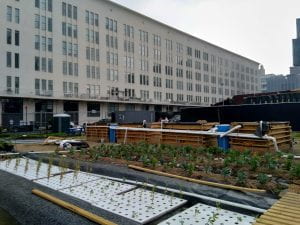
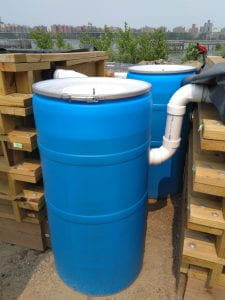
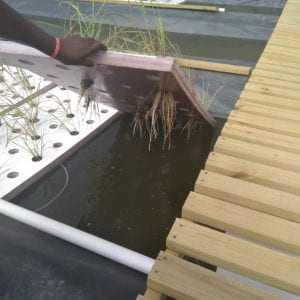
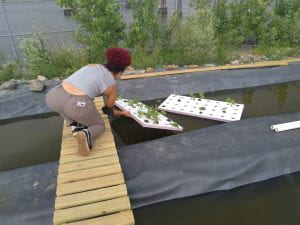
While the New Roots Community Garden at Woodside is, too, an example of the resilience of community gardens due to its location and segmentation, we met with a local resident, Lu Meng, on Thursday who showed us a newly opened community farm behind a church a couple of streets away from our site. There, we found PVC pipes hung up as makeshift trellises and even large buckets filled with water that were used to grow large grassy shoots (which were possibly a type of bamboo). As we learned about the origin story behind this community garden, we were even more amazed to find that the entire area used to be wooded, and had been cleared and left without any use before the church decided to start a community garden in the remaining space. In even the most unexpected places, from rooftops to waterfronts to overpasses to forests, the desire to grow urban gardens and farms always manages to overcome all of the odds and initial challenges, and persevere as beacons of hope and a testament of the strength of their respective communities.
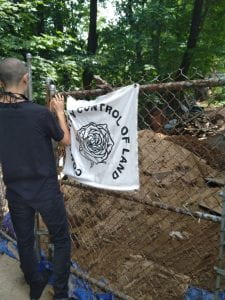
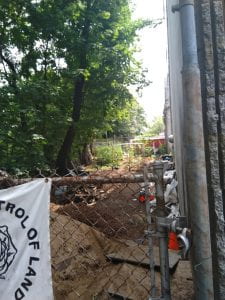
Outside of our hands-on gardening and farm work, Kendra and I were also able to meet with Tapan this week to discuss updates on our VR project. As we move forward for the remainder of the summer, Kendra and I will shift from model-building to focus more on photographing larger components at the farm, such as distinctive picnic tables or frequently used equipment such as wheelbarrows. In this way, we will be able to maximize our time while we are at the farm, and spend time refining models during our work during the upcoming fall semester on campus. Despite some shifts in project priorities, we are nevertheless making exciting progress and will reconvene next week to meet with Maya, Red Hook’s community chef to discuss collaborating on cooking demos with the youth interns at the farm. Until next time!
Weekly Highlights:
